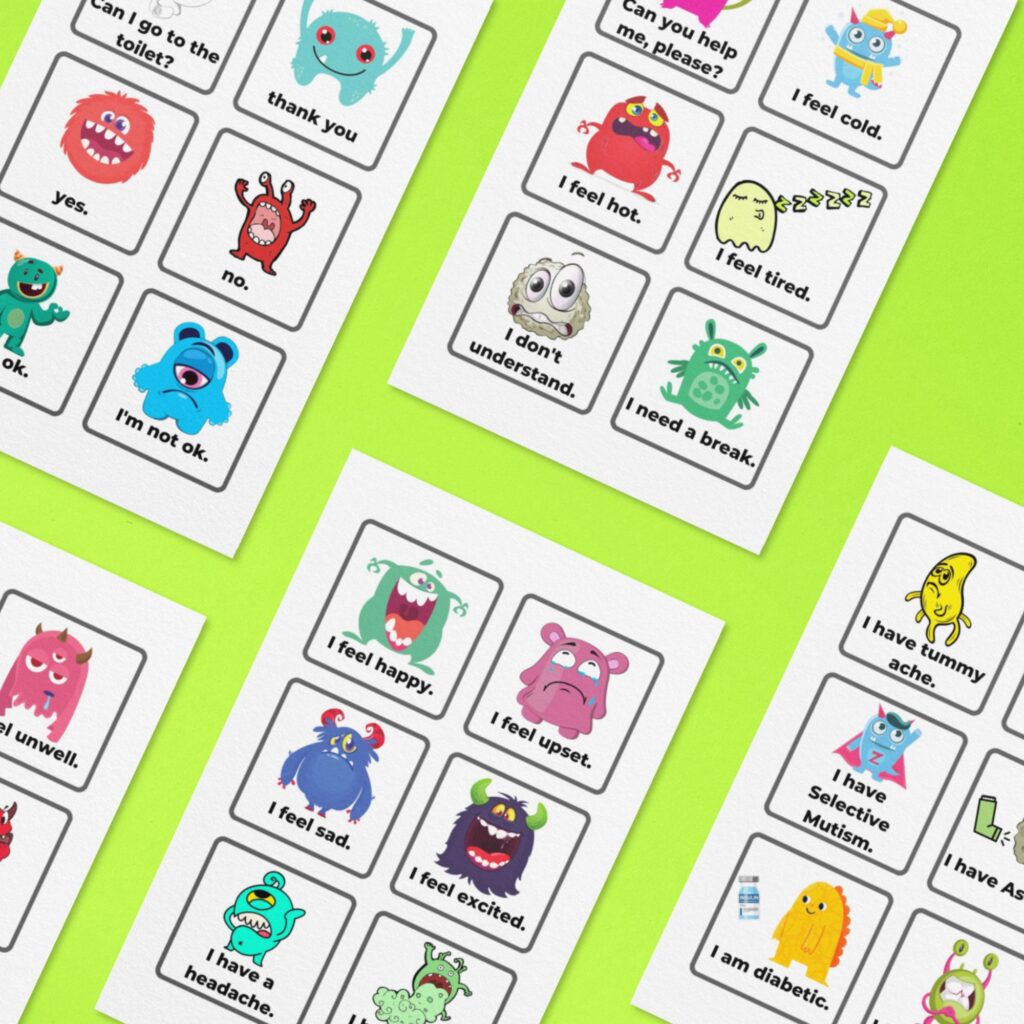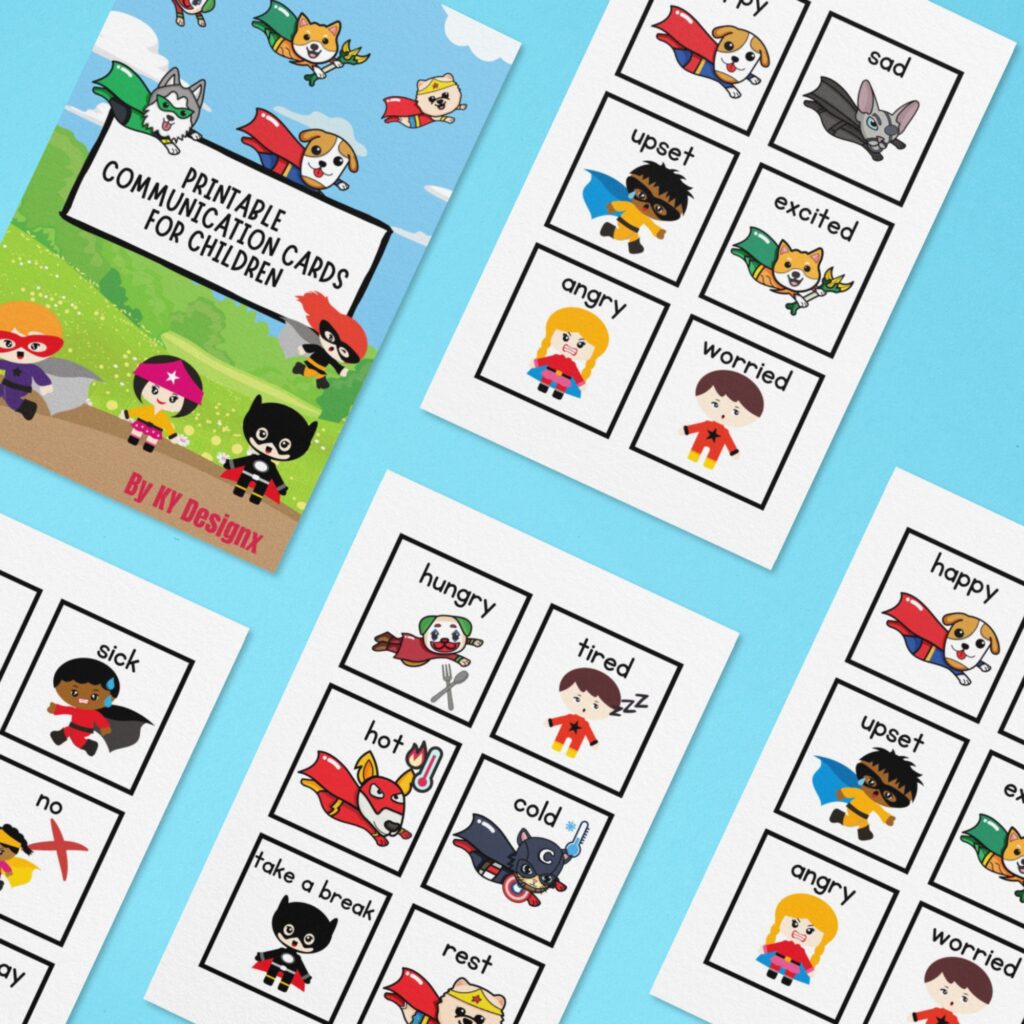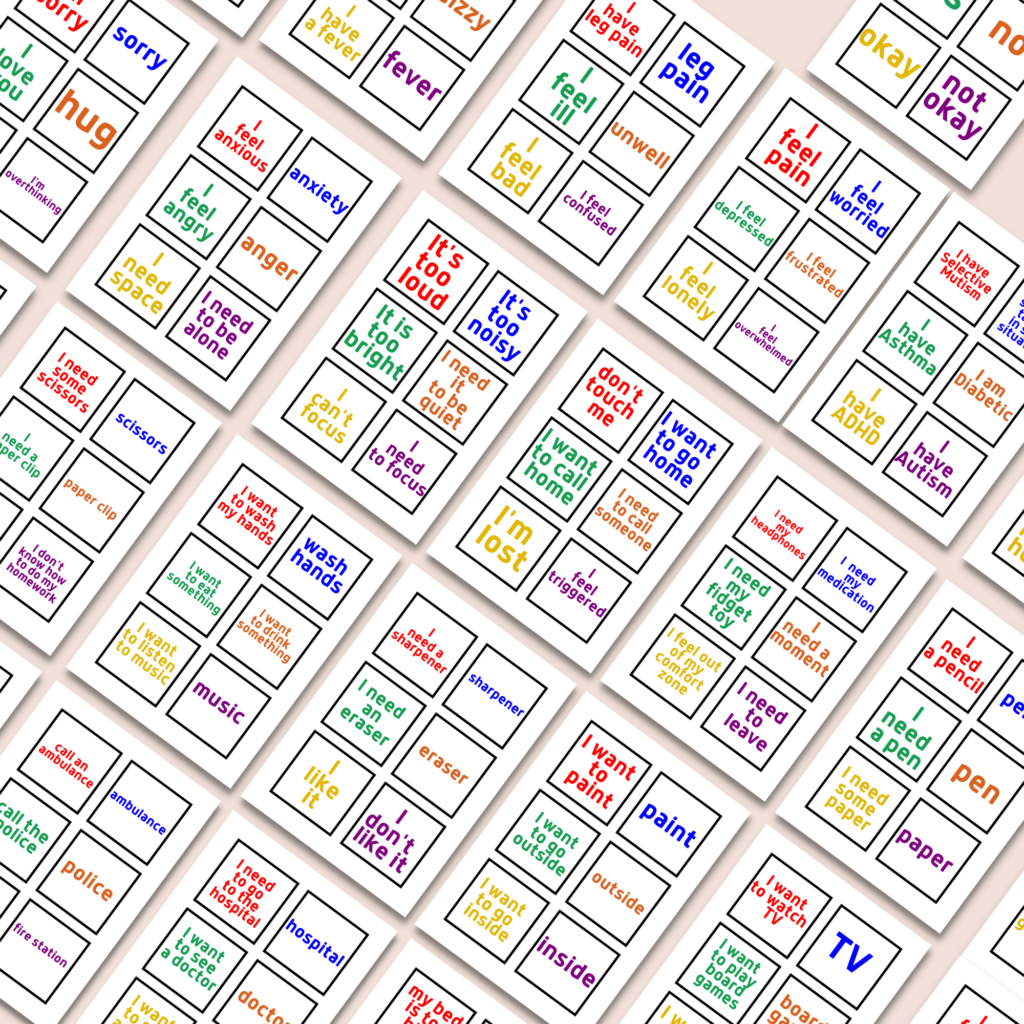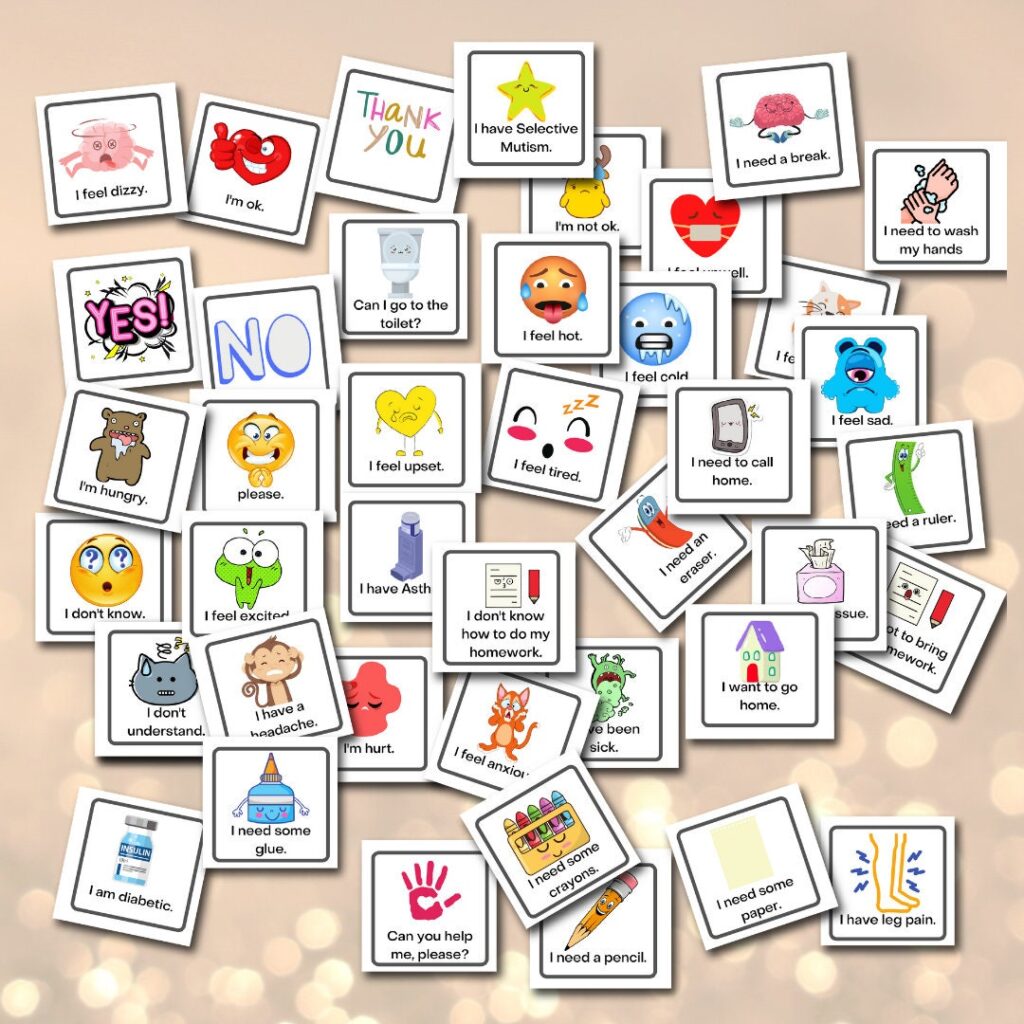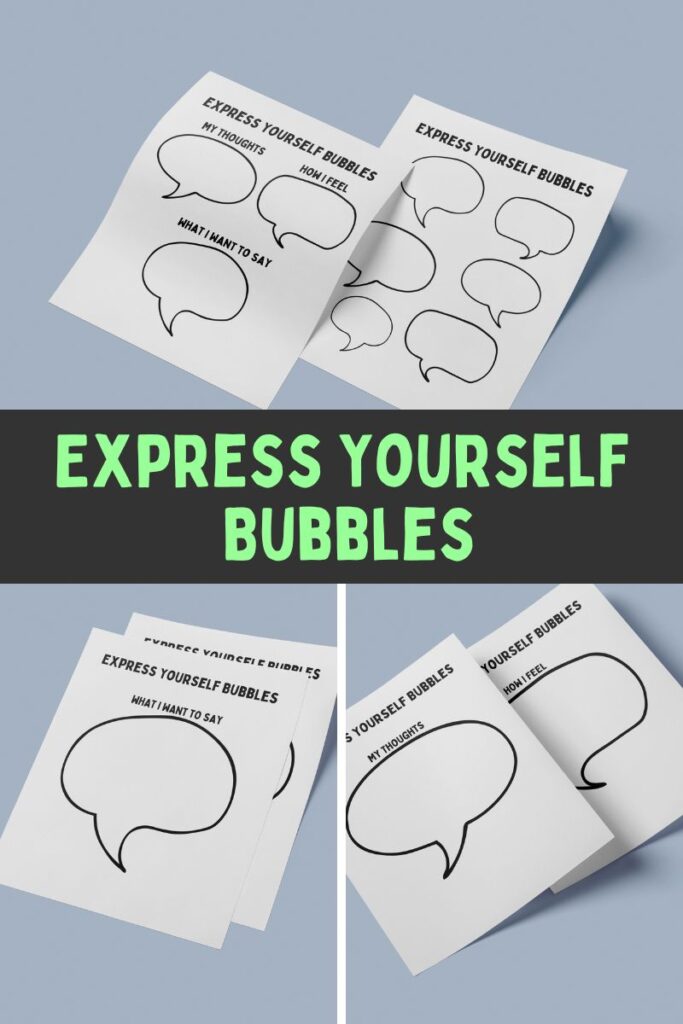Empowering Expression: Supporting Children with Selective Mutism
Selective Mutism is a unique challenge that parents, teachers, and therapists often navigate with patience and understanding. The journey of supporting children with selective mutism requires tailored approaches and tools that recognize and respect their unique communication styles. In this blog post, Empowering Expression: Supporting Children with Selective Mutism, we explore how you can empower expression with certain communication tools.

Understanding Selective Mutism
Understanding Selective Mutism is an essential aspect of providing effective support for children navigating this complex anxiety disorder. Selective Mutism goes beyond mere shyness; it’s characterized by a persistent inability to speak comfortably in specific social situations, despite being able to communicate fluently in other settings. This condition often arises from social anxiety, making the affected individuals feel an overwhelming sense of discomfort or fear in particular environments.
Parents, teachers, and therapists play a crucial role in understanding the complexities of Selective Mutism.and creating an environment that facilitates the child’s journey toward comfortable self-expression. It’s important to approach Selective Mutism with empathy, patience, and an understanding that each child’s experience with this disorder is unique.
Children with Selective Mutism may face challenges in initiating or participating in verbal communication, leading to potential social and academic difficulties. It’s crucial to distinguish Selective Mutism from voluntary mutism, as children with Selective Mutism often wish to speak but find it emotionally challenging due to anxiety.
Building a foundation of trust and understanding is key. Parents and educators should work collaboratively to develop strategies that help the child gradually overcome the barriers associated with Selective Mutism. Creating a supportive and inclusive environment, along with using tools like Communication Cards or other Communication tools can empower these children to express themselves at their own pace and in a manner that aligns with their needs.
The Role of Communication Cards:
Communication cards are valuable tools that offer a visual means of communication for children with selective mutism. These cards typically feature a range of emotions, needs, and desires, allowing children to express themselves non-verbally. By providing a visual aid, communication cards offer a bridge for children to communicate comfortably, reducing the pressure associated with verbal expression.
How to Use Communication Cards
- Introduce the Cards:
– Begin by introducing the communication cards to the child in a calm and supportive environment. Not all children will want to use the cards. Some, children may feel the cards draw more attention to them. However, other children feel that the cards take the pressure off from speaking.
– Explain the purpose of the cards, emphasizing that they are tools to help express feelings, needs, or thoughts. – Use colorful picture cards for younger children and older children may perfer written cards. Ask the child which one they perfer. - Familiarize the Child:
– Take time to familiarize the child with the cards. You can start with basic emotions, needs, and common phrases.
– Encourage the child to associate each visual with its corresponding meaning. – Start with one or two cards and gruadually add more. - Create a Visual Reference:
– Organize the cards in a clear and accessible manner, grouping them by categories such as emotions, requests, or activities. - Practice Using the Cards:
– Engage in role-playing scenarios where the child can practice using the communication cards.
– Model how to select and show the appropriate card based on different situations. This helps build the child’s confidence in using the cards. - Encourage Spontaneous Use:
– Gradually encourage the child to use the cards spontaneously in everyday situations. - Combine with Verbal Communication:
– Use the communication cards as a supplement to verbal communication. Encourage the child to express themselves verbally if possible, while also using the visual aids. - Expand Card Categories:
– As the child becomes more comfortable with the basic cards, consider expanding the categories to include a broader range of emotions, requests, or activities. - Implement in Various Settings:
– Ensure that the child has access to the communication cards in different settings, such as in school, or during therapy sessions. - Regularly Update Cards:
– Periodically update the communication cards to accommodate the child’s evolving needs and expanding vocabulary.
– Introduce new visuals to reflect the child’s growing ability to express a wider range of emotions and thoughts. If the child becomes more verbal, start to reduce the use of the cards and encourage speaking. For example, the child may start using the toilet card, if possible encourage the child to say toilet alongside the card and then once the child is comfortable saying toilet, remove the card
Types of Communication Cards for Children
Expressive Worksheets
Expressive worksheets are tools designed to facilitate self-expression, often in a structured and guided format. These worksheets come in various forms and cater to different age groups and purposes. Here are a few examples of expressive worksheets:
- Emotional Expression Worksheets:
– These worksheets may feature prompts or activities that encourage individuals to express and explore their emotions. They often include spaces for drawing, writing, or using symbols to represent feelings. - Thought Journals:
– Thought journals are a type of expressive worksheet where individuals can jot down their thoughts, reflections, or concerns. These worksheets may include prompts to guide individuals in exploring and articulating their thoughts. - Artistic Expression Worksheets:
– Geared towards creativity, these worksheets may include prompts for drawing, painting, or other artistic expressions. They provide a structured space for individuals to visually convey their ideas or emotions. - Communication Worksheets:
– Designed to improve communication skills, these worksheets may focus on verbal or non-verbal communication. They could include prompts for practicing conversation, expressing needs, or exploring different forms of communication. - Goal Setting Worksheets:
– These worksheets guide individuals in setting and expressing their goals. They may include sections for defining goals, breaking them down into achievable steps, and expressing the emotions associated with each goal. - Narrative or Storytelling Worksheets:
– Encouraging individuals to express themselves through storytelling, these worksheets may provide prompts or templates for creating narratives. This can be a helpful tool for exploring personal experiences or imaginative stories. - Mindfulness and Relaxation Worksheets:
– Worksheets focused on mindfulness often include activities that encourage individuals to express their feelings of calmness, relaxation, or stress. They may involve coloring, breathing exercises, or reflections on moments of tranquility. - Social Skills Worksheets:
– Targeting social communication, these worksheets may include prompts for expressing thoughts and feelings in social situations. They aim to improve social interaction skills and self-expression within a group setting.
Expressive worksheets serve as structured frameworks to help individuals externalize and communicate their thoughts, emotions, and experiences. These tools are commonly used in therapeutic settings, educational environments, or for personal development to encourage self-reflection and communication skills.
How to Use the Worksheets
Unlocking the potential of the “Express Myself Bubbles” worksheets is a straightforward yet impactful process. You can make your own or download this free one. These worksheets serve as a powerful tool for children who may find it challenging to verbalize their thoughts and feelings. Here’s a guide on how to maximize the effectiveness of these expressive bubbles:
- Introduction:
– Begin by introducing the worksheets in a calm and inviting manner. Explain that these bubbles are a special space for children to share their thoughts and emotions, especially if verbal communication feels difficult. - Create a Safe Environment:
– Ensure that the environment is safe, supportive, and free of judgment. This will encourage children to feel comfortable expressing themselves without any hesitation. - Demonstrate Usage:
– Demonstrate how to use the bubbles by either drawing or writing in one of them. Emphasize that there are no right or wrong ways to fill the bubbles—each child’s expression is unique and valid. - Encourage Creativity:
– Emphasize that children can choose to either draw or write inside the bubbles, or even combine both methods. This flexibility allows for a personalized and creative means of expression. - Use Diverse Prompts:
– Explore the diverse prompts on the worksheets such as “My Thoughts,” “How I Feel,” or “What I Want to Say.” This variety offers children different avenues to express various aspects of their emotions and experiences. - Reinforce Positive Expression: – Celebrate and acknowledge each child’s use of the bubbles. Positive reinforcement creates a supportive atmosphere, reinforcing the idea that expressing oneself is a positive and valued endeavor.
- Regular Check-Ins:
– Incorporate the use of these worksheets into regular check-ins or reflective sessions. This consistent practice allows for an ongoing dialogue and helps track the child’s emotional journey. - Respect Privacy:
– Emphasize that the content within the bubbles is personal, and the child has the option to share or keep it private. This respect for privacy builds trust and encourages open expression.
Disclaimer: This blog post (Empowering Expression: Supporting Children with Selective Mutism) is intended for informational purposes only and should not be considered a substitute for professional medical advice, diagnosis, or treatment. The content provided is based on the personal experiences and insights of the author, who is both a qualified Occupational Therapist and a mother of a child diagnosed with selective mutism. While the information presented strives to offer helpful guidance and support, individual circumstances may vary, and readers are encouraged to consult with qualified healthcare professionals or therapists for personalized advice and assistance. The author and the platform disclaim any liability for actions taken by individuals based on the information provided in this blog post. Always seek the advice of a qualified healthcare professional for any questions or concerns regarding mental health or medical conditions.


